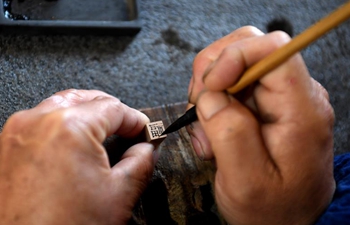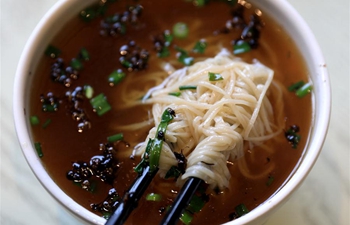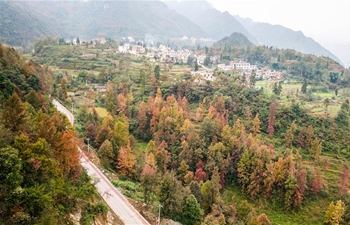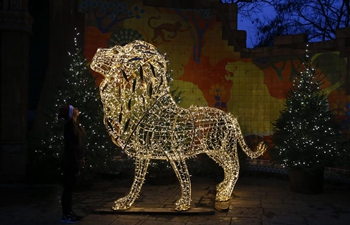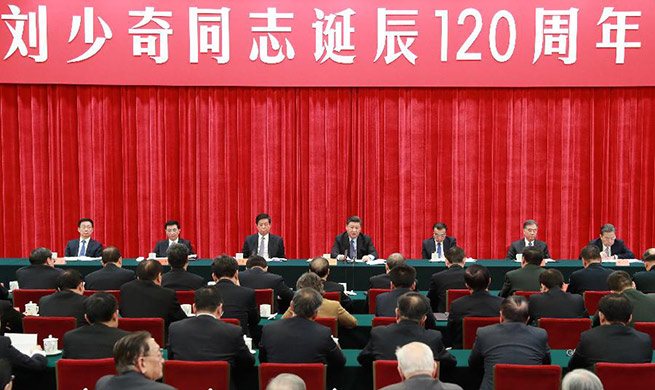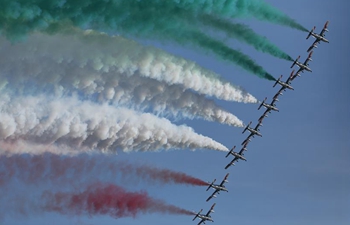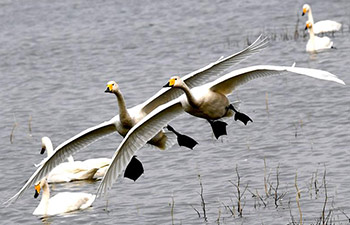HOHHOT, Nov. 25 (Xinhua) -- Agula, a herdsman, couldn't wait to buy a pickup truck for his horse Ajinai. Next summer, Ajinai will be able to take a ride on the truck to compete in racing events across the grasslands.
"Herders only rode horses when they had to travel to faraway places. But now, even horses can take a ride as our life gets better," said Agula's grandfather, Arbuje.
Arbuje has lived his whole life in East Ujimqin Banner of Xilin Gol League, north China's Inner Mongolia Autonomous Region. In Mongolian culture, horses are so important that there are more than 300 words for them and a further 200 just for their color.
"The Mongolian horse used to be a means of production and life, and a partner that we ethnic Mongolians couldn't live without," Arbuje said.
"For Mongolians, an ethnic minority on horseback, our life has been attached to horses. Horses were an important battle force, a transport means, as well as the theme of many poems and our close friends in life," he added.
However, in the late 1990s, with motorcycles and cars becoming commonplace, horses gradually withered in Mongolian life. The number of horses owned by herdsmen in the region fell from 2.4 million in 1975 to less than 700,000 in 2007.
Agula was born in the 1990s. When he grew up, horse-riding saw an revival. Six years ago, he came back to his hometown after graduating from college. He fell in love with horse-riding, a skill that he should have learnt when he was a child, when he mounted a horse for the first time.
He then started to raise and train horses, and take part in horse-racing events. He would always ride a horse, instead of a motorcycle, unless it was urgent.
Agula treats his two horses like his children, scheduling time to feed them grass and water, and preparing a special diet when it is competition time. He also pacifies them when they are in a bad mood.
"We need horses on the grassland. Mongolian horses are not simply tools, but one of the most important cultural carriers for Mongolians," he said.
Raising horses also unexpectedly brings fortune to the grassland.
Burenjargal, a herdsman in Borigen village of Xilinhot, raises 60 horses on his 533-hectare farm, and earns nearly 200,000 yuan (about 28,858 U.S. dollars) from horse-raising a year.
He takes 20 horses to provide rides for tourists at scenic sites during travel season in summer, from which he can earn 70,000 yuan in three months.
He also sells mare's milk, one of the specialities on the grassland. With its stomachic and blood circulation activating function, the milk is so popular he can't even meet demand.
Now, more and more people are raising horses, not as a production tool, but as a cultural carrier. So far, the number of horses has climbed to 848,000 in Inner Mongolia. An international expo on horse-raising will also be held next year to further boost the industry.




